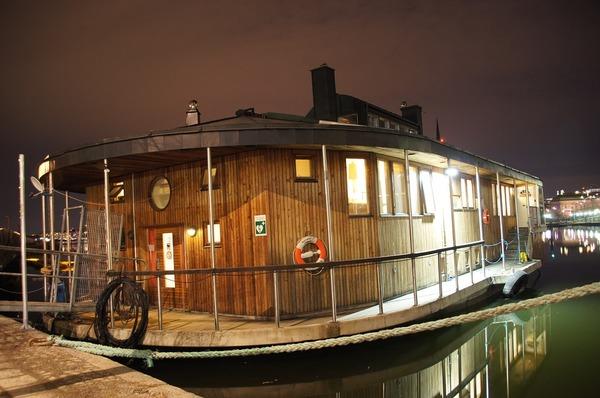Owning a houseboat offers a unique lifestyle filled with adventure and tranquility on the water. However, protecting this floating home requires more than just regular maintenance—it demands thoughtful, tailored insurance coverage. Navigating the ins and outs of houseboat insurance can be confusing, but understanding the essentials is crucial to safeguarding your investment against unforeseen risks. In this article, we’ll explore key tips for insuring your houseboat, highlighting what you need to know to ensure comprehensive protection and peace of mind on every voyage. Whether you’re a first-time owner or looking to update your current policy, these insights will help you make informed decisions and stay covered on the water.
Table of Contents
- Understanding Coverage Options for Comprehensive Houseboat Insurance
- Assessing Risks Unique to Houseboats and How to Mitigate Them
- Choosing the Right Provider for Specialized Houseboat Policies
- Essential Documentation and Maintenance Tips to Support Your Insurance Claim
- Final Thoughts
Understanding Coverage Options for Comprehensive Houseboat Insurance
Assessing Risks Unique to Houseboats and How to Mitigate Them
Owning a houseboat comes with a unique set of challenges that traditional homeowners or boat owners don’t typically face. One of the biggest concerns is the constant exposure to water-related risks, such as flooding, hull damage, and corrosion. Unlike a land-based home, your houseboat is vulnerable to unpredictable weather conditions, fluctuating water levels, and potential collisions with other vessels or debris. Additionally, fire hazards on a houseboat can escalate quickly due to confined spaces and limited escape routes. Understanding these risks is the first step to tailored insurance coverage that fits your lifestyle and protects your investment.
Mitigating these risks involves proactive maintenance and safety measures that not only preserve your houseboat but also reduce insurance premiums. Consider installing water detection alarms, fire extinguishers strategically placed throughout the boat, and investing in regular hull inspections to catch vulnerabilities before they worsen. Implementing a well-documented safety plan can also demonstrate to insurers that you are managing risks responsibly. Furthermore, understanding your insurer’s specific requirements for protective equipment and maintenance can provide leverage when customizing your insurance policy to cover these unique hazards effectively.
- Routine hull and mechanical inspections to prevent unexpected failures
- Weather monitoring systems for early storm alerts
- Secure mooring and dockage to avoid damage from waves and other boats
- Fire suppression systems designed for marine environments
Choosing the Right Provider for Specialized Houseboat Policies
Finding an insurance provider that specializes in houseboat policies is crucial, as these unique vessels come with distinct risks and coverage needs. When selecting a company, prioritize those with a proven track record in marine insurance and expertise in houseboat-specific issues like water damage, mooring liabilities, and navigation-related risks. Look for providers offering tailored packages rather than generic boat insurance, as this ensures your policy adequately addresses both your floating home and your lifestyle on the water.
To make an informed decision, consider these factors:
- Comprehensive coverage options: Protection for both the structure and contents of your houseboat, along with liability coverage.
- Claims process efficiency: Choose providers with a reputation for smooth and timely claims handling.
- Customer service availability: Access to knowledgeable agents who understand the nuances of houseboat living.
- Competitive premiums: Balance between cost and coverage to secure the best value.
Essential Documentation and Maintenance Tips to Support Your Insurance Claim
Proper documentation is your strongest ally when filing an insurance claim for your houseboat. Start by keeping an updated inventory of all valuables and fixtures onboard, including purchase receipts, photos, and serial numbers. This detailed record not only streamlines the claims process but also helps verify the extent of your loss or damage. Additionally, maintain logs of routine upkeep and repairs conducted on the vessel, as these demonstrate your commitment to upkeep and can influence claim outcomes positively.
Regular maintenance is equally crucial—not just for the safety and longevity of your houseboat, but also as evidence of responsible ownership. Make a habit of conducting thorough inspections after each season, focusing on hull integrity, electrical systems, and safety equipment. Consider keeping digital or printed copies of service records and professional inspections. In the event of an incident, this documentation can substantiate your claim and potentially expedite the resolution. Remember, meticulous records and proactive care are essential pillars for a smooth insurance experience.
Final Thoughts
Navigating the world of houseboat insurance might seem daunting at first, but with the right knowledge and preparation, you can safeguard your floating home with confidence. Remember, understanding your coverage options, accurately assessing your vessel’s value, and working with experienced insurers are essential steps toward protecting your investment and peace of mind. By following these key tips, you’ll be well-equipped to find a policy that fits your unique needs and ensures smooth sailing ahead. Happy boating!






